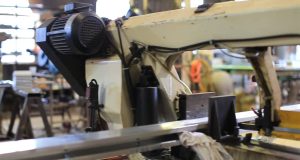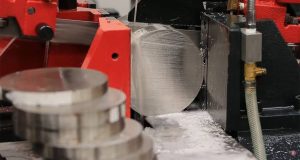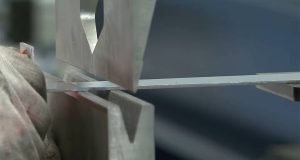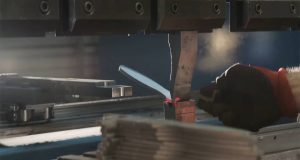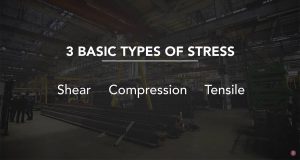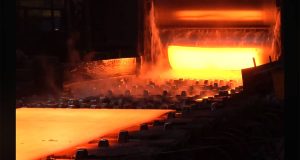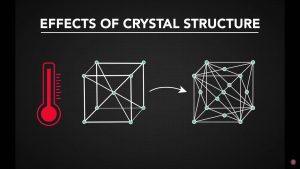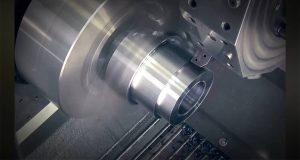Plain carbon steel remains a fundamental material in the manufacturing and construction industries due to its affordability, versatility, and range of mechanical properties. Its composition typically includes iron and carbon, with carbon content varying between 0.05% and 2%, directly impacting the steel’s strength, hardness, and ductility.
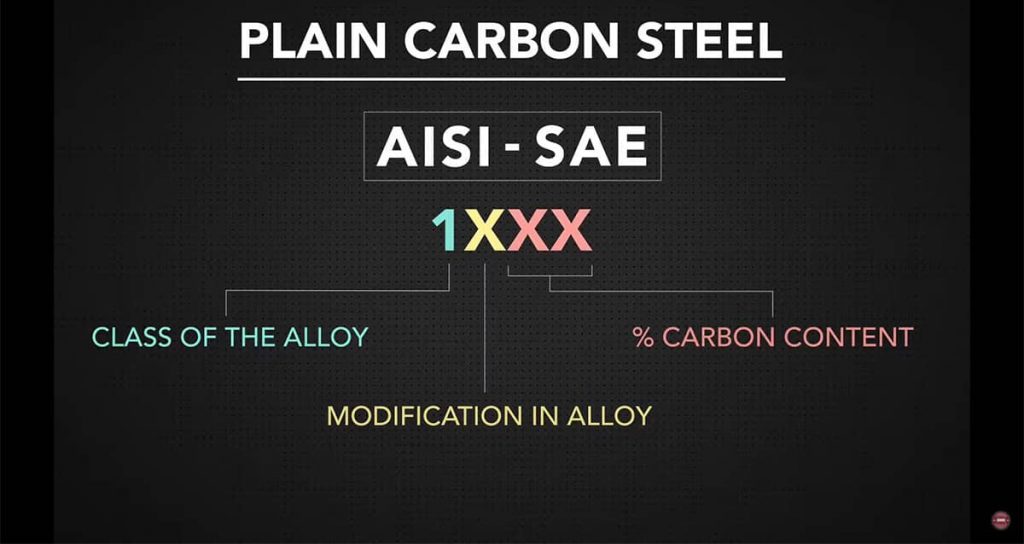
Understanding the AISI Steel Numbering System
The AISI (American Iron and Steel Institute) steel numbering system provides a standardized way to identify steel compositions, particularly plain carbon steel. This system uses a four-digit code to specify the elements and carbon content in the steel. Here’s a breakdown of the meaning behind each digit:
- First Digit: Always “1” for plain carbon steel, indicating that there are no significant alloying elements present.
- Second Digit: Reflects whether an additional element, like sulfur or phosphorus, is included in the steel’s composition.
- Last Two Digits: These represent the carbon content in the steel as a percentage. For example, if the last two digits are “23,” this signifies that the steel contains 0.23% carbon.
Examples of Steel Numbering:
- 1023 Steel:
- Plain carbon steel (first digit “1”).
- No significant alloying elements (second digit “0”).
- Contains 0.23% carbon (last two digits “23”).
- 1029 Steel:
- Similarly, a plain carbon steel with no additional elements, but a slightly higher carbon content of 0.29%.
This numbering system allows manufacturers and engineers to choose the appropriate type of steel based on the specific requirements of their projects, whether that involves strength, machinability, or hardness.
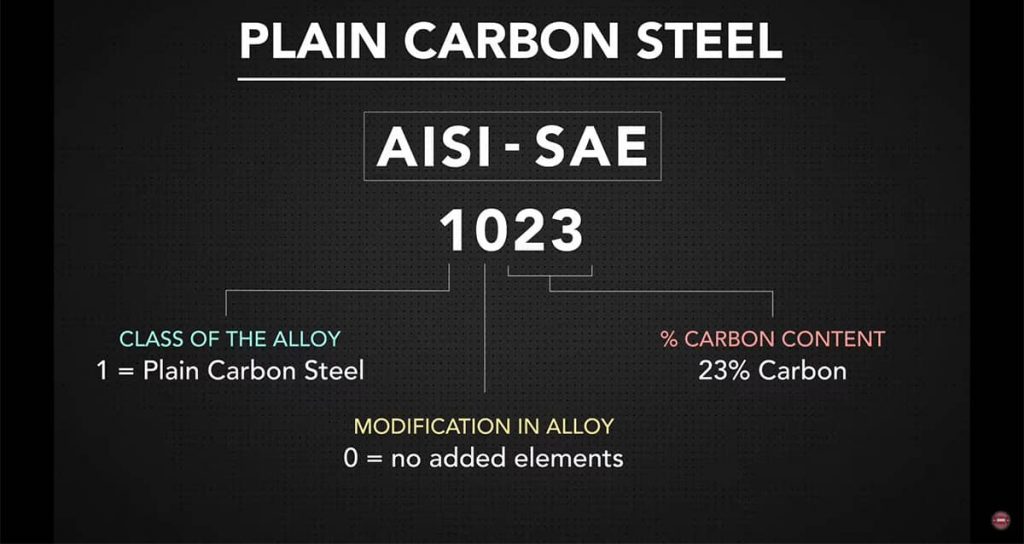
Types of Carbon Steels
Carbon steels are categorized not just by their carbon content but also by the presence of other elements, such as sulfur, phosphorus, and manganese. The AISI-SAE steel numbering system provides further classification within plain carbon steels, including:
- 11xx Steels (Free-Machining Metals): These steels contain added sulfur, which enhances machinability, making them ideal for applications where ease of cutting and shaping is important.
- 12xx Steels: Similar to the 11xx series, these steels include both sulfur and phosphorus, which further improves machinability. This makes 12xx steels a popular choice for manufacturing components that require precision machining.
- 15xx Steels: Known for their increased manganese content (ranging from 1.00% to 1.65%), 15xx steels exhibit improved strength and hardness. Manganese also contributes to the steel’s wear resistance, making it suitable for applications requiring a tougher material.
Applications of Plain Carbon Steel
Thanks to its simple composition and range of properties, plain carbon steel is used across various industries:
- Construction: Structural components such as beams, columns, and rebar.
- Automotive: Body panels, engine parts, and frames.
- Machinery: Tools, gears, shafts, and fasteners.
- Manufacturing: Screws, bolts, and other hardware requiring formability and strength.
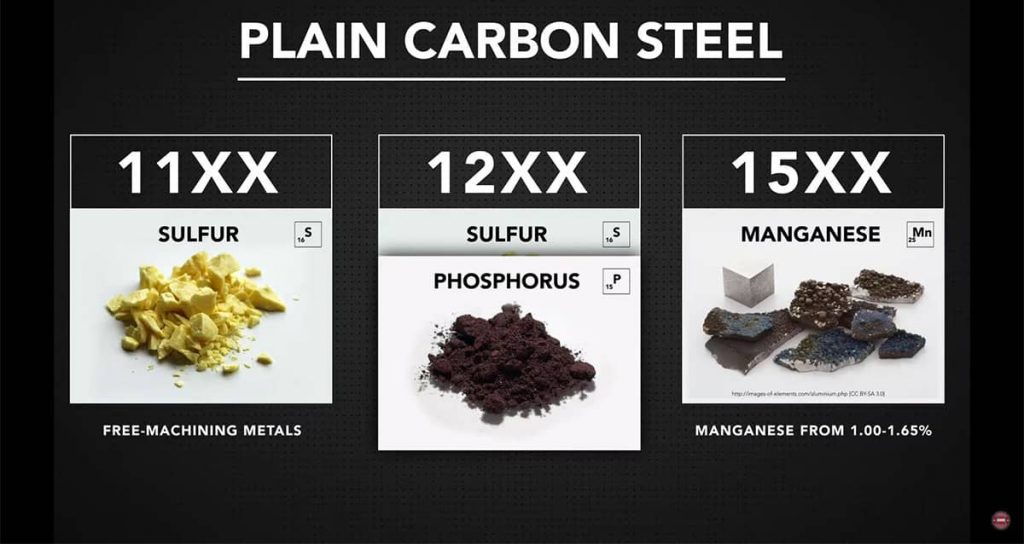
Benefits of Understanding the Steel Composition
Knowing the composition of plain carbon steel helps select the right material for each specific application. The balance of carbon, manganese, sulfur, and phosphorus determines how easily the steel can be machined, its wear resistance, and its overall strength. Choosing the correct type of steel ensures optimal performance and cost-efficiency.
Test Your Knowledge at SawbladeUniversity.com
Ready to challenge yourself? Head over to SawbladeUniversity.com and take our interactive quiz to test your knowledge on saw blades, materials, and cutting techniques! Whether you’re a beginner or a seasoned professional, the quiz is designed to help sharpen your skills and expand your understanding of the tools and materials you work with. It’s a fun and engaging way to learn, so give it a try and see how you score!
Explore More: “What is Machinability?”
Curious about what makes certain metals easier to machine than others? Check out our detailed article “What is Machinability?” to learn how factors like material composition, hardness, and tooling can affect how efficiently a metal can be cut and shaped. Understanding machinability is crucial for selecting the right materials and tools for your projects, improving precision, and optimizing production time. Dive into this essential topic to gain insights into how you can enhance your machining processes.


